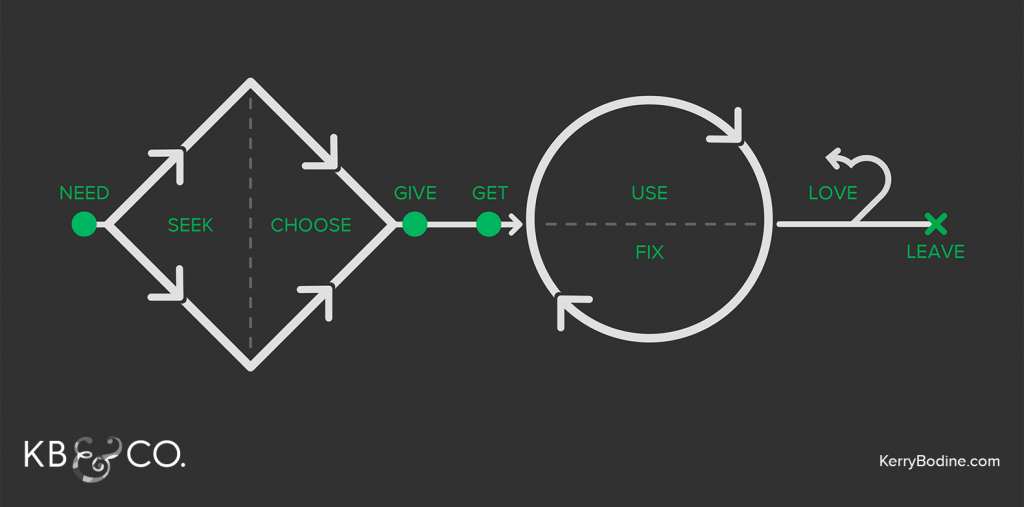Where should you start your journey mapping efforts? If you don’t know the answer, you’re not alone. Many aspiring journey mappers feel overwhelmed because they believe that they need to map every single interaction that their customers could possibly have with their organization—a daunting task, indeed!
I can’t say you should never map the full end-to-end journey (one that’s basically aligned with the complete customer lifecycle). But such end-to-end maps tend to offer only a high-level health check of the various lifecycle stages and lack crucial details needed to identify improvement opportunities and drive change.
We suggest that you begin your journey mapping efforts with just one or two stages of the archetypal customer journey (shown above). Specifically, choose a journey that…
- Is causing pain for your target customers. If you’ve got a Voice of the Customer program, this is the first place to look for customer pain points. Front-of-house employees like retail associates, customer service reps, and account managers are also treasure troves of known customer grievances.
- AND, is causing pain for your business. This could be in the form of declining revenue, slower than expected customer acquisition, an increase in support calls, or any other financial or operational metric that’s important to your executives.
- AND, has enough complexity to warrant journey mapping. Typically, this means that customers are crossing channels and completing a task that takes more than a couple of minutes. If, for example, you want to know what happens as customers try to complete a task on your mobile site, you’re probably better off conducting standard usability testing.
- AND, zeroes in on a specific goal, task, or challenge for your customers with a defined beginning and end. When I first started journey mapping, I had several investment firms as clients who wanted to map the journey of “saving for retirement.” While not impossible to map (more on that in this post), an amorphous process that takes place in fits and starts over 40+ years isn’t a great place to start your journey mapping efforts. Rather, consider a task that your customers would think about as they’re waking up in the morning or driving to work: What’s on their to-do list to accomplish today? Use that mental model and customers’ own language to define the journey.
Keep in mind that these are AND statements. The journey that you choose to map should fit all four of these criteria.




